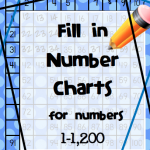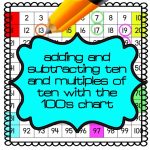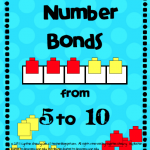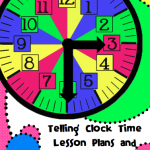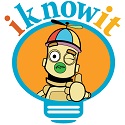7 Ways to Improve Standardized Testing and Practice
1. Teach students to “Brain Dump”. As soon as students are allowed to begin their test, tell them to write everything down that they worked hard to remember, but are afraid that they might forget during the course of the test. Our state tests give students a math reference sheet, card stock rulers and pattern blocks. Students could write other formulas down on their reference sheet, write the name of the pattern blocks on the pattern blocks, and write the fractional measurements on their rulers. If your state doesn’t provide students with these materials, then they may provide them scratch paper, or they may be allowed to write in the test booklet itself. Students could “brain dump” in these areas.
2. Have a Mathlete’s Challenge. To give students a break from the mundane multiple choice test prep and practice, allow them to work in pairs to discuss which answers are correct. Give the top three student pairs a prize for answering the most questions correctly. The competition helps keep the students focused on the task. Students get the benefit of discussing with their partners which answer is correct. Allow students to move to a quiet corner of the room to work in their pairs. Remind them that because this is a competition, they need to work quietly so that no one steals their answers.
3. Weeks before the test make vocabulary or spelling lists based on most often used language in test questions. Your list might include words such as represent, approximately, elaborate, explain, outline, trace, support etc.
4. Time students like they will be timed when taking their real state tests. Allow students to see the timer as the minutes pass by to help them pace themselves.
5. Practice bubbles. Make sure students are bubbling in the whole bubble. Practice bubbling in bubbles darkly.
6. Practice using the calculator. If students are allowed to use calculators, make sure they know that they are smarter than the calculator and that the calculator is only a tool. For example, many students may have difficulty inputting money in the calculator. Instead of typing 0.50 for 50 cents, students type 50 and then add 1.50 for a dollar and fifty cents. Then they get the wrong answer. Students also build a misconception around the calculator showing 0.5 and thinking that the calculator is showing them that they have 5 cents and not 50 cents.
Another common misconception students have is when they are dividing numbers. Students tend to misread the number behind the decimal as the remainder. On a recent test, I noticed that many students saw 29 and divided it by 5 only to read 5.8 on their calculator screen. Many of the students wrote that the answer was 5 with 8 leftover (as a remainder) in the word problem.
7. Eat a peppermint candy. Peppermint oil is excellent for mental fatigue and depression, refreshing the spirit and stimulating mental agility and improving concentration. It helps for apathy, shock, headache, migraine, nervous stress according to this website and this one. We always give students a few peppermints during testing to give them an extra boost.
How Can You Make Mundane Addition and Subtraction More Engaging?
In order to make addition and subtraction more engaging, there are several things you can do to help keep students attention. Have students play games such as Close to 100, Close to 0, Close to 20, and other such games. In addition to the games that are already available from many of the Math Solutions books by Marilyn Burns and other authors, I developed some card sorts to help keep students’ attention on solving problems. I have developed a variety of card sorts to teach addition and subtraction within 100. Students match a picture card of unifix or snap cubes to an equation. To make a card sort more challenging, I like to include a card which doesn’t match any other card. This helps target some misconceptions that develop around addition and subtraction. If students solve card sorts in pairs, then this creates much students’ higher thinking as they evaluate each other’s decisions about where to place cards. If you would like to try out one of the these card sorts, just click on the picture below to download a free sample of an addition card sort without regrouping. This link will take you to TPT where you can download the preview file.
Nothing But Nets
I just wanted to share one of my favorite products with you all. I purchased these solids pictured below for our school two years ago and all of the teachers love using these to teach students the plane shapes that make up a solid. They are great for helping students identify nets of solids also. Today I taught a class in which the teacher was absent, and I used these solids that unfold into nets. After looking at these, students took paper nets and listed the shapes they saw in the nets and then labeled the solids with sticky notes. Next they composed their 3 dimensional solids into other shapes such as robots and rocket ships. See the following pictures below to take a peek at some of the students’ creations.
FUN Testing Practice!
Since I am my school’s math coach, all during the year I announce a problem of the week to the students at our morning assembly. Each problem of the week is a multiple choice released item test question. Students answer the question and explain how they know the answer, and then they place their answer through the slot in the answer boxes I have set up in the hallway. At the end of the week, I pull one answer from the box at our morning assembly and the winners get a prize. Since I have a question for primary kids and for intermediate kids, there are two boxes and I pull a winner from each box. The afternoon before I pull a winner, I check to make sure the students’ answers are correct, and I eliminate the wrong submissions and the submissions that are not explained.
In addition to having a problem of the day submission on a school wide basis, some teachers have created their own personal classroom problem of the day boxes to practice questions that are more often missed. They pull a name from the box daily and reward the winner.
How Can You Build a Linear Clock?
When teaching time, students have difficulty understanding that the day has twenty four hours because there are only 12 numbers on a clock. To help students understand a.m and p.m build a linear clock. To make a large linear clock that involves all of your students, give students each two sentence strips. Have students fold each sentence strip in half three times. This will make eight sections. Overlap the two sections of the sentence strip so that you now have a very long strip with fourteen sections. Assign each student a different hour of the day. For example, one student will have 1 a.m, another 2 a.m. and so on. The folds on the strips will represent five minute intervals. Students should start writing on the second section, so that the blank sections can be attached to the next hour. A student will begin writing the five minute intervals on each fold like so, 1:00, 1:05, 1:10, 1:15, 1:20, 1:25, 1:30, 1:35, 1:40, 1:45, 1:50 1:55. Then there should be a blank section left afterwards so that the last section may be attached to the next hour. Between the five minute intervals, student may draw four little marks to represent the minutes or little tics on a clock between the numbers. Provided you have 24 students, you will now have a complete clock with a.m. and p.m. time. If you hang this linear clock up in your classroom, it will be extremely long and probably wrap around the entire room. When you take the ends of the liner clock and have them meet in a circular fashion, students have a dawning moment and you can hear “oh!” being whispered under breath throughout the room. What I like about building this linear clock is that students are able to see both a.m and p.m. Having the clock hanging up when discussing elapsed time makes finding elapsed time so much more concrete for students who need this support. In addition to teaching elapsed time, students can label different activities that happen throughout the day and post them over the linear clock.
3 Reasons Your Students May Be Stumped with Quarters of an Hour
Students often struggle with labeling the hands correctly on a clock with quarters of an hour. This is for several reasons:
1. Students hear quarter and immediately think 25 cents, so they label the minute hand on the 5 to represent 25 minutes. To redirect students from this misconception remind them that quarter means four parts. Quarts of a gallon means four quarts equal one gallon. A quarter of a dollar means 25 cents because 4 twenty-fives equal 100 cents or a dollar.
2. Students may understand that a quarter is fifteen minutes, but they hear literally, “Show me a quarter after 5.” Students will literally find the 5 on the clock and find fifteen minutes after the five. Then they will put the minute hand on the 8. To correct students explain that it is fifteen minutes after the minute hand hits the new hour or the twelve.
3. Students sometimes are confused with the language a quarter after, a quarter past, a quarter to, a quarter til, a quarter until, a quarter before. To help students with the language, create a chart that shows after and past mean the same things with an arrow showing counter clockwise. Likewise, chart a poster that shows that to, til, until, and before mean the same things with a hand pointing counter clockwise.
Are Your Undue Assumptions about the Number Sense of Students Hindering Your Students’ Learning?
Yesterday I spent some time in a second grade classroom helping students who were adding double digit numbers. When working with one student, I realized he didn’t know he had ten fingers on his hand, and he didn’t know that four fingers on one hand and five fingers on another made one less than ten–nine. While at a CGI (Cognitively Guided Instruction) training today (I am in Year 2 of the training), some things dawned on me about this children. Children do not innately know that they have 10 fingers, nor do they necessarily discover this on their own. With that said, the CGI trainer today told us that she knew of a teacher that has students do finger flashes. She calls out numbers and the students hold up that many fingers. I had never thought to do something so simplistic. I know that in kindergarten we do such activities with dot cards, but I had never thought of finger flashes–WOW!
In this same second grade classroom, I moved on to another little girl who had difficulty counting on from the larger number. Even after I showed this student how to count on, I noticed that when looking at the problem she didn’t know where to get the other number to count on with her fingers. I showed her how to look at the problem to find the number. Again at the CGI training I realized for students to develop the number sense they need to count on, the teacher can push students toward counting on by posing a very large number in a word problem followed by a much smaller number. For example, with the problem 62 + 3, 62 would be easier to start from and just count up 3 more. Once a child is counting up just 3 more, the second number could be increased. As my mentor always used to tell me–You know better, then you do better. That is me.
Do Your Students Mix Up Area and Perimeter? Try This…
Seeing the same problem, students continuing to mix up area and perimeter questions, reoccur with our 4th and 5th grade students on their unit tests, we decided to try something new to help them differentiate between the two. With the questions already cut out, we took all of the released area and perimeter questions from our previous state tests and had students do a sort with them. Pairs of students sorted the questions underneath an area or perimeter heading. To add a little challenge to the activity, we added some volume, capacity, weight, multiplication, and division questions without telling them that these questions weren’t area or perimeter. As teachers, we learned during the students’ sort that students were thinking of area as the space inside of anything so that they were confusing volume and capacity with area. This led to students gaining a deeper understanding of the meaning of area. The students also learned from one another as Bloom’s higher order thinking on the evaluation level was in place. Students had to discuss each question and agree or disagree with one another about the decision to place it underneath a heading. See below for a look at our activity.
Snapshot: What Does Obama’s State of the Union Address Mean for You?
During Obama’s State of the Union Address he spoke of lofty initiatives to:
- Keep kids in high school until they are 18
- offer rewards and incentives for teacher effectiveness instead of seniority
- improve teacher quality by improving teacher preparation programs
- partner businesses with community colleges
- end tuition tax credits
- make college more affordable by keeping tuition rates the same and ending federal funding if the universities increase their tuition
- replace ineffective teachers
- Give schools flexibility instead of teaching to the test, creatively teach students to learn…(and how will this happen since there will still be a test?)
See the full article at Huffington Post.

